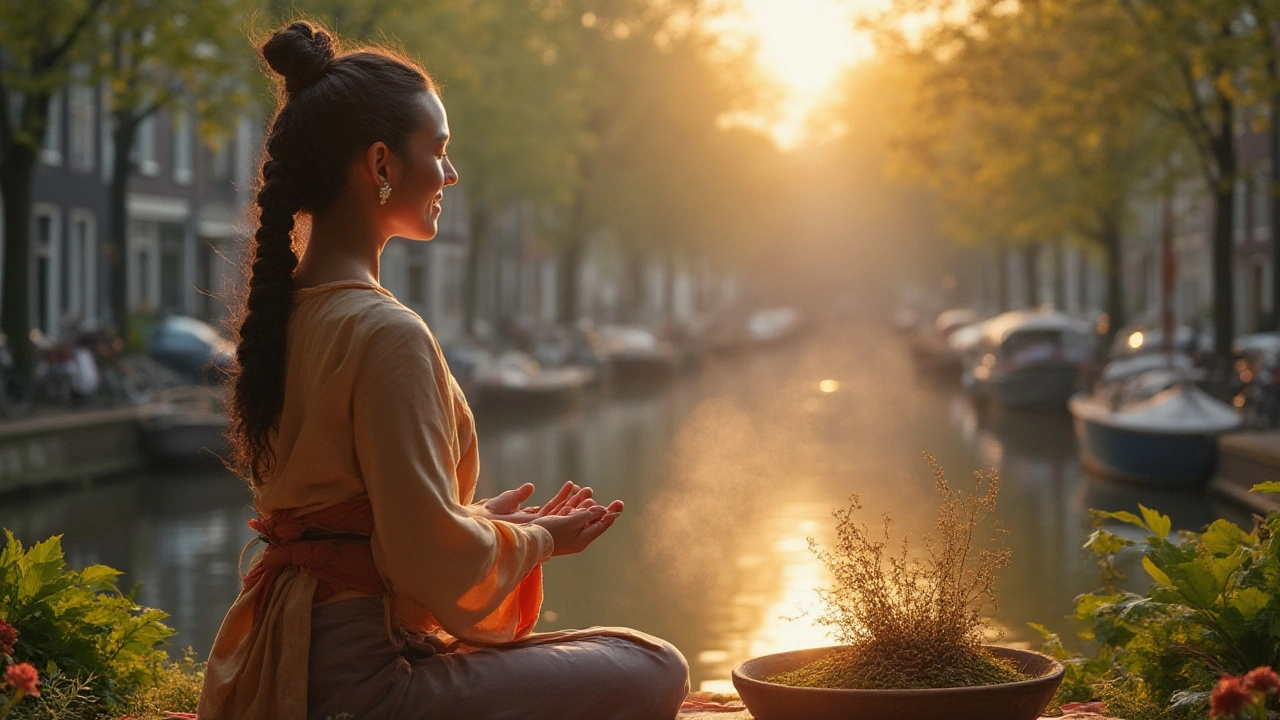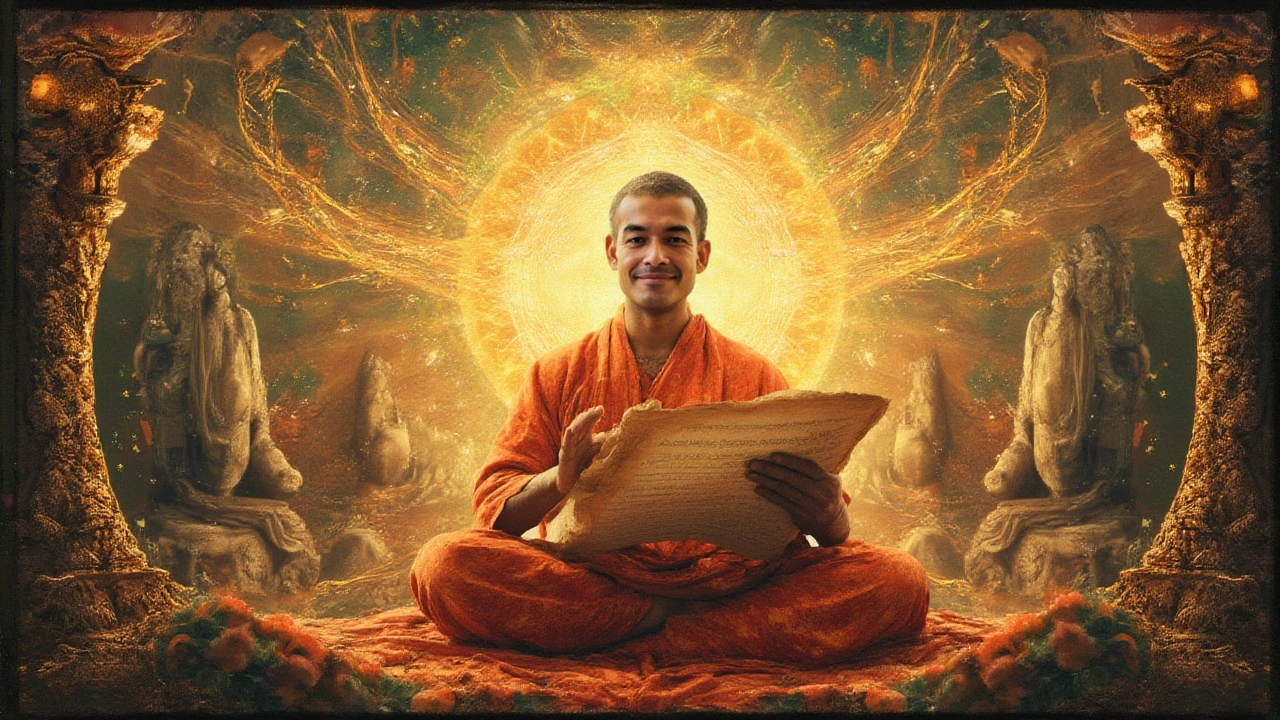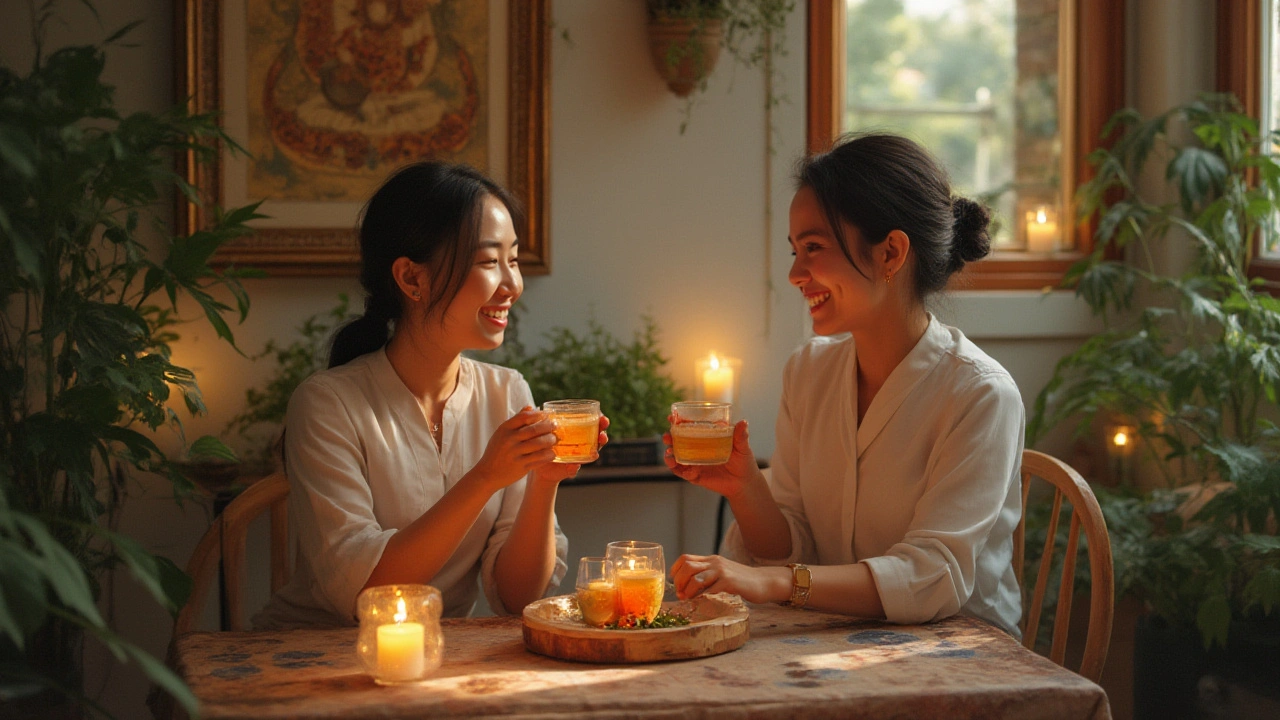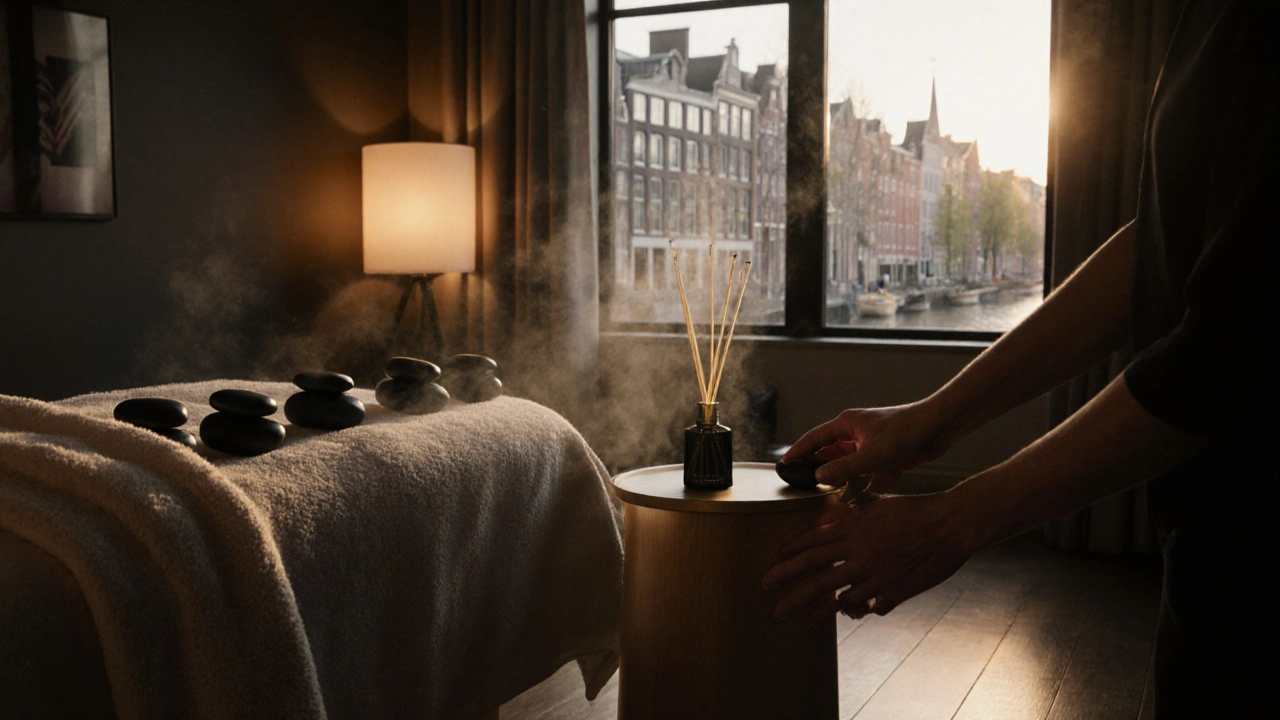Thai Massage in Traditional Thai Medicine: History, Benefits & Amsterdam Guide

So you’re picturing a massage—maybe some scented oils, soft music, and a snooze. But the truth? Thai massage throws all those clichés right out the window. This practice can feel almost like a ritual, blending acupressure, stretching, meditation, and energy work. People in Bangkok and small Thai villages have relied on this art for centuries to keep life flowing smoothly. Even now, in 2025, Thai massage in Amsterdam is more than a spa treat: it’s a key part of a fascinating traditional medicine system that’s made its way across the globe. Ever felt your mind and body get stuck in a rut? Let’s see what makes Thai massage such a powerful way to reboot, not just relax.
Traditional Thai Massage: Roots, Ritual, and Medicine
First things first, let’s clear up what traditional Thai massage actually is—and why it’s earned a place at the heart of Thai medicine. You might hear it called “Nuad Thai” or “yoga massage.” Unlike Swedish or deep tissue massage, you keep your clothes on and the therapist uses not only their hands but also elbows, knees, and sometimes even feet. The whole experience is often compared to a dance or a moving meditation. But why is that?
Traditional Thai Medicine (TTM) weaves together physical, energetic, and spiritual care. It’s not just about treating backaches or stiff necks—though it does that too. The core idea is to balance the body’s ‘lom’ (meaning wind, or life force) as it flows through energy pathways, called ‘sen’. Ancient texts and oral traditions, dating back over 2,500 years, say these pathways connect everything from organs to moods. The legendary founder, Jīvaka Komarabhācca, was said to be Buddha’s own physician, and the old techniques still owe a nod to Buddhist philosophy. It’s wild to think about, but even the Wat Pho temple in Bangkok, with its famous golden Buddha statue, has inscriptions and diagrams on its walls showing massage points and remedies. Walk into any authentic Thai massage school, and you’ll probably see practitioners reciting prayers or giving thanks before a session—a tradition grounded in respect and mindfulness.
Dive deeper, and the connections grow more surprising. For example, Thai medicine doesn’t see sickness as a random bad luck—usually it’s the result of disharmony. Maybe you’ve slept badly, sat hunched at your computer, or had a fall, and now your energy gets blocked. The solution? Open the energy lines, mobilize joints, and encourage deep breathing. A well-trained Thai therapist reads your body with their hands, finding knots or tension you barely noticed. Sometimes you’ll even hear a crack or a pop as stiff joints release, which feels oddly satisfying. But this isn’t brute force—each stretch gets paired with gentle rocking, compression, and rhythmic pressure that matches your breathing patterns. The result? Not just less pain, but a sense of clarity and lightness. Fans say some sessions feel like a reset, both physically and mentally.
Modern research is catching up to what Thais have known for generations. A 2020 study published in the Journal of Bodywork and Movement Therapies found that Thai massage could significantly reduce chronic back pain and increase flexibility in office workers. Another interesting note: the World Health Organization officially recognized ‘Traditional Thai Massage’ as an intangible cultural heritage in 2019. So, this isn’t a passing trend but a proud, protected tradition.
If you ever get a chance to try Thai massage in its homeland or right here in Amsterdam, see if you notice the subtle differences: a rural healer may focus more on traditional herbs and energy work, while a city therapist may mix in modern anatomy. The common thread? This is never “just a massage.” It’s more like a physical tune-up combined with a minor spiritual journey.
So, for folks searching for stress relief, pain solutions, or simply a new way to connect with their bodies, Thai massage offers more than relaxation: it offers a whole new perspective on health.

Exploring Thai Massage in Amsterdam: Types, Experience, Costs and Local Spots
Let’s get practical. Amsterdam isn’t Bangkok, but it’s surprisingly easy to experience real Thai massage without catching a flight. The city is packed with both authentic Thai-run parlors and hybrids that blend local spa culture with Thai energy. Do you know the difference between a traditional Thai massage and a Thai oil massage? Or how to spot a true TTM experience among all the wellness fads in town?
- Traditional dry Thai massage (Nuad Thai): No oil, lots of stretching and compression along the Sen energy lines. It’s amazing for flexibility and back pain, and leaves you buzzing with fresh energy.
- Thai oil massage: A mix of Thai massage techniques with smooth oil application. Perfect for anyone who prefers gentler touch, less stretching, and some glide.
- Foot reflexology: The therapist works on pressure points in your feet that connect to the rest of the body. It’s weirdly relaxing and great after a long sightseeing day.
- Herbal compress massage: Steamed herbal pouches are pressed along the body to ease sore muscles and boost circulation. The scent alone can put you in a good mood.
In neighborhoods like De Pijp and Oud-West, you’ll stumble across both tiny, family-owned studios and big, modern facilities. Want a truly traditional experience? Ask if the therapist trained in Thailand, or look for spots endorsed by the Thai Spa Association. Reliable places often display certificates and, yes, you might even see an altar or photos of their teachers as a nod to their roots.
Curious how a session goes down? Don’t expect to zone out like with a Swedish massage. A typical session starts with a chat about your health and problem areas. Then, you’ll change into loose cotton clothes (most places provide them) and lie on a futon mat. The therapist uses hands, elbows, knees, and feet to move you through a series of stretches—a bit like passive yoga. Some stretches look dramatic, but experienced therapists know how to move with your body, never against it. If something hurts, just say so—clear communication is key.
How long should you book? A one-hour slot works for an energy boost, but if you want a full-body reset, aim for 90 minutes or even two hours. Beginners often feel lighter and calmer after, while seasoned fans chase that post-massage “floating” feeling. Bonus tip: Drink plenty of water afterwards, because muscles and tissues can release toxins as they’re worked on. Don’t be shocked if you’re extra thirsty or even a little sore the next day—it’s totally normal.
Here’s a real-life example. Michiel, a Dutch office worker, swears by his monthly Thai massage routine near Weteringschans. After years of back pain, he ditched painkillers for stretches and acupressure. According to him, "It’s like yoga, meditation and deep tissue therapy in one, but I don’t have to do any work!" Even tourists rave about Amsterdam’s welcoming, professional Thai studios. The best part? Most accept walk-ins or online bookings, but weekends fill up fast.
Speaking of costs, most reputable Amsterdam Thai massage studios charge around €60-€80 for a one-hour session, while two hours can run between €100-€130. Prices may creep up depending on extras like herbal compresses or foot massages. Always double-check if tips are included—Dutch service industry norms mean it’s not always expected, but always appreciated for great care.
Here’s a breakdown to help with your hunt:
| Type | Duration | Expected Price (€) | Main Focus |
|---|---|---|---|
| Traditional Thai Massage | 60-120 mins | 60-130 | Stretching, acupressure |
| Thai Oil Massage | 60-90 mins | 65-110 | Relaxation, muscle relief |
| Thai Foot Massage | 30-60 mins | 40-70 | Reflexology |
| Herbal Compress Massage | 90-120 mins | 90-140 | Muscle & joint pain |
Finally, make sure you share any health concerns with your therapist before starting—especially if you’re pregnant, have serious injuries, or medical issues. Some Sen lines shouldn’t be worked on for certain conditions, and true pros know how to adapt. Always trust your gut: if a place feels dodgy or the therapist is too rough, walk away.

Thai Massage in Amsterdam: Comparison & Expert FAQ
Still on the fence? Maybe you’re torn between booking a traditional Thai massage or trying something else, like Swedish or deep tissue. Let’s stack up the differences side-by-side and clear up those burning questions, Amsterdam-style.
| Thai Massage | Swedish Massage | Deep Tissue Massage | |
|---|---|---|---|
| Main Technique | Stretching, pressure, energy lines | Long, gliding strokes with oil | Slow deep pressure on muscle knots |
| Clothing | Fully clothed (loose cotton) | Undressed or under towel | Undressed or under towel |
| Environment | Mat on the floor, no oil required | Massage table, oil used | Massage table, oil used |
| Best for | Flexibility, energy, release blockages | Relaxation, stress relief | Stubborn muscle pain, athletes |
| Origin | Thailand, Buddhist roots | Sweden, Western medical roots | Western, targeted therapy |
Still curious about the ins and outs? Here are some real FAQs straight from Amsterdam’s massage seekers:
- Is Thai massage painful? It can be intense, especially if your muscles are stiff. But pain isn’t the goal—let your therapist know if anything feels wrong.
- Can I get Thai massage if I’m pregnant? Many studios offer “prenatal” Thai massage but only book with therapists trained for it, as some pressure points are off-limits.
- I’m super ticklish. Can I handle it? Thai massage uses firm pressure, not light strokes, so most people find it pretty grounding—even those who dislike being tickled.
- How do I know if my therapist is qualified? Ask where they trained, look for Thai Spa Association certificates, and trust your gut vibe. Top spots train staff in Thailand and do regular skills refreshers.
- How soon should I eat before a session? Go light—a heavy meal right before a massage is a rookie mistake. A little fruit or tea an hour before is usually safe.
- Can kids get Thai massage? Some places offer special sessions for kids, but always check with the studio in advance.
- Does insurance cover Thai massage? In the Netherlands, most insurance policies don’t cover Thai massage unless provided by a licensed physiotherapist, so check your policy or ask for a VAT invoice.
- Should I tip? Tipping isn’t required in Dutch culture but leaving 5-10% is always a nice gesture for satisfactory service.
If you’re ready to skip the endless scrolling and treat yourself to a session, start close to home. Search “authentic Thai massage Amsterdam,” check online reviews, and walk in or book online—most places have easy web forms. Trust your gut. The right therapist makes all the difference between a forgettable rubdown and an experience that keeps you coming back for that energy-boosting, mind-clearing magic. Ready to feel reset—body, mind, and soul? Maybe a thai massage is exactly what’s missing from your Amsterdam routine.

